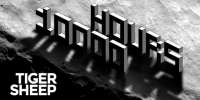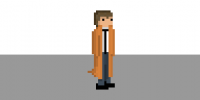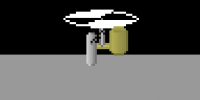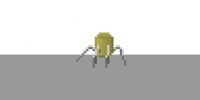HOUR ZERO
What do you need to really do to start a small company? As with all projects, it is very easy to get caught up in the doing and forget about the planning, but I will tell you now that the best and most successful projects spend the first 30% of their budgeted time planning. Our project, like most projects, started out as a fun idea. We wanted a clear purpose that was grander and more interesting than “I want to make a great game like Blizzard.” Marie Curie once said “Be less curious about people and more curious about ideas”, And I think this is very true. If you have an idea and you push for the realization of that idea, you will achieve great things. If you spend your time trying to become like something else you will rarely contribute something new and innovative enough to achieve true success. With that said, let’s begin Hour Zero of the 10,000 Hours Project!
The framework:
Doing anything you really care about takes serious time and effort. When I set out to make video games, I realized that because I have a family I wouldn’t be able to put in the required time just as a side project. That meant doing it as a real business, so I started the following process. I am fortunate enough to have several friends who have gone to law school and are bar certified in my state, so I was able to get initial advice and get filings done for about $100 plus state registration fees. One week later, presto! I had a letter from the IRS and the state saying that I was the real deal and Tiger Sheep LLC was born.
Now that we were a legitimate business, it was time to make sure we had some accounting software in place to manage all of our expenses and revenues in a proper manner. Since my background is in small business accounting software, I went for something a little bigger than necessary: SAP Business One. On the flip side, this software will expand with my business up to a hypothetical $100 million in revenue and several hundred employees. Here’s to hoping I can max it out!
For people without a background in accounting, I would recommend QuickBooks. You can pick it up at Costco and it is great for someone just beginning. There are also a large community of users and many local professionals and CPA’s that support QuickBooks.
This leads me to our next piece of expensive professional services that need to be addressed: proper accounting and filing. A good CPA will work with a startup for a very reasonable price, and will help make sure that you are filing all of your quarterly, state and federal taxes properly. Any additional filings that may be required for how you are operating your business are also addressed to avoid any hidden surprises. Unless you are a CPA yourself, I highly recommend letting them do your end-of-year tax filings as well. Mistakes are expensive, as I learned in my first company. We ended up budgeting about $3000 for software, legal counsel, and CPA consult, just to get started. If you go with QuickBooks you will only need something in the neighborhood of $1000.
Office space, Employees and Hardware acquisition and setup.
If you have planned well, you’ll know exactly what you need in terms of people and software to be able to start functioning. Since we were starting at zero, we chose a simpler platform to use, with the plan to grow into more complex coding and art environments.
For us, the choice was simple: Do we know C or C++? No we don’t. At least not well enough to start writing games, and both languages have an experience curve we wanted to avoid. Once we knew we weren’t going the hardcore route, we looked at other options and settled on JavaScript, CSS, HTML5 to begin with. These languages are open, easy, and documented extensively. We found the Impact engine for JavaScript, that provided us a framework that was easy to understand and well suited to top down or side scrolling 2D games. In short? Perfect for beginners.
Back to planning, The next question I asked was “what am I personally not very good at that it would be more efficient to hire someone to do than to learn?” For myself, it was the artistic elements of game and web design. I don’t have the knack, and didn’t want to spend hours upon hours creating something that an artist could do in 30 minutes. A word of caution: People are by far your most important and most difficult resource to manage, and a poor choice in the initial hiring will be a major distraction, expense and time sink.
When I hired Steven I looked for four things primarily and they follow in order of importance:
-
Is he a good fit for the company I was building, in terms of personality?
-
Is he intelligent and passionate about games?
-
Is my impression that he could learn new skills quickly?
-
Is his experience and background appropriate for the position I was hiring for?
Note that experience and background are last on the list; ultimately what someone has done is only a reasonable indicator of what they could accomplish in the future. With a little guidance I can turn someone with passion and intelligence into a master of their craft even without significant prior experience.
With Steven, I felt that he met this criteria, and I can honestly say it was a good decision. He has been able to work largely independently, and has successfully completed a wide range of projects. Many projects were outside of his initial skill set, but hiring a quick learner proved to be an excellent decision!
Back to hardware: Now that I knew who I was going to be hiring, and had a pretty good idea what they would need to do, I could purchase appropriate computer hardware. Hardware is cheap, so don’t skimp! For the business, I purchased upper mid-grade equipment and as a result there was very little wait time for complex tasks and applications. Dual monitors are your friend, and I think all employees should have at least two.
For software, I chose Microsoft as my foundation because it is what I know, and Microsoft has several great programs for startups to get rolling, like their Bizspark (www.bizspark.com) initiative. I highly recommend it. I also took advantage of a solid sale and purchased the Adobe Suite at a nice discount, so Steven would have the tools necessary for proper graphic design.
Finally, we needed a workspace. If possible, work from home! After people, rent is your next most expensive investment at this stage, and if you can avoid it that is great. If you can’t, I suggest checking on Craigslist. There are buildings that might be more suited to a warehouse or distribution company, but would work really great for an indie startup. You don’t need a compound like Google or Valve when you’re just beginning! You could also look at your local executive suites, and if they aren’t fully populated negotiate for a better rate. We are currently working out of an executive suite, and it’s certainly more comfortable. On the other side of the coin, it will limit our growth, and we are not as free to make modifications to the space as we would be in a more traditional commercial space lease. All-in-all look at the cost per square foot, and shoot for about $1 per Sq. ft. per month or better.
This is a little glance into the beginnings of how we began, and I hope it proves useful for someone looking into starting a serious indie startup. You need money to make money, but you can do quite a bit to keep your costs low!






